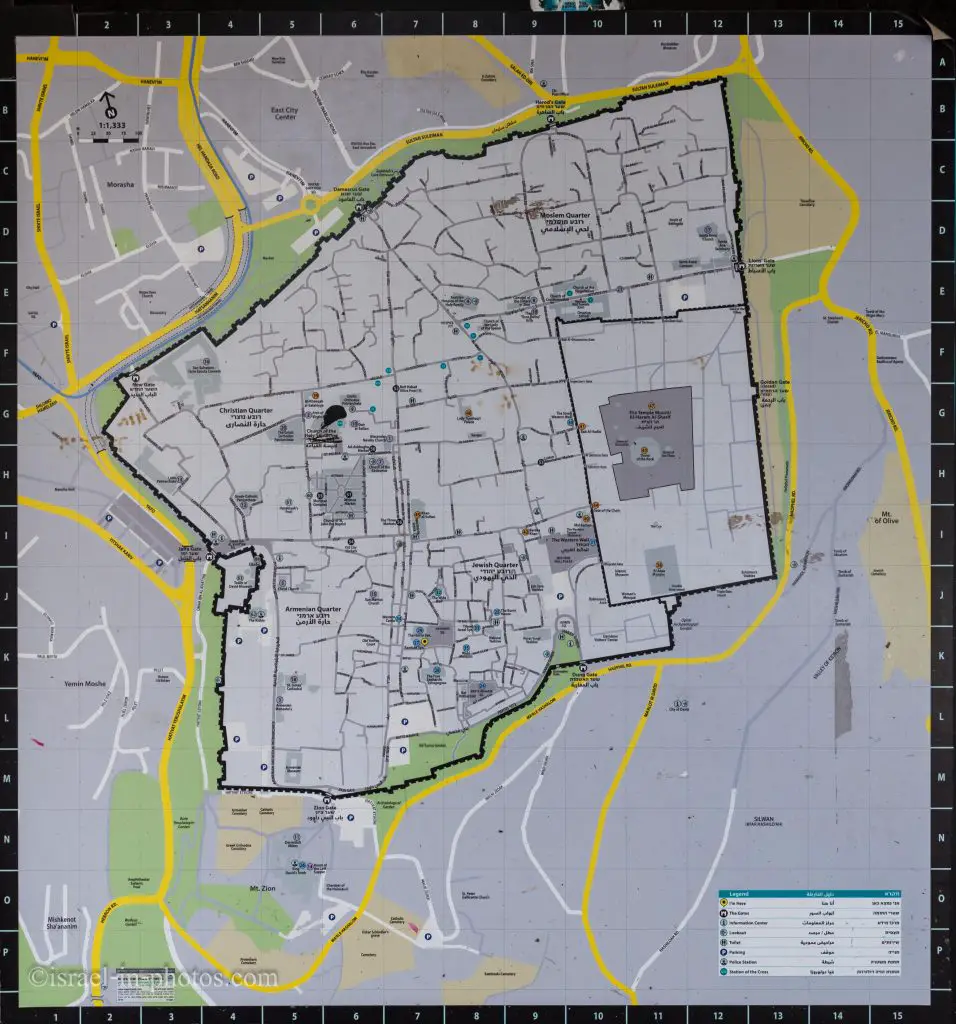Tower of David – Visitor Guide to Jerusalem Citadel
The medieval citadel Tower of David is a historical museum that tells the story of Jerusalem and holds light shows.
Notes:
- I took the featured photo during the Jerusalem Festival Of Light. If you are visiting on a regular day, there will be no light sphere (that appears in the center of the picture).
- On June 1st, 2023, the Tower of David Jerusalem Museum reopened after renovation (new entrance pavilion, new galleries, and more).
Table of Contents
- 1 Map
- 2 Opening Hours
- 3 Entrance Fee
- 4 Guided Tours
- 5 Audio Guide
- 6 What is Another Name for the Tower of David?
- 7 Tower of David and King David
- 8 The Museum
- 9 Permanent Exhibition
- 9.1 Tower of Phasael
- 9.2 Canaanite Period (3200 BCE)
- 9.3 First Temple Period (1006 BCE)
- 9.4 Return to Zion and Second Temple Period (515 BCE)
- 9.5 Early Muslim Period (638)
- 9.6 Crusader Period (1099)
- 9.7 Mamluk Period (1260)
- 9.8 Ottoman Period (1517)
- 9.9 British rule – State of Israel (1917)
- 9.10 Original 19th-century model of Jerusalem
- 10 Temporary Exhibitions
- 11 How Much Time Does a Visit to the Tower Of David Take?
- 12 Night Experiences – Light Show
- 13 Summary
Map
The Tower Of David is located near Jaffa Gate. And as you enter through Jaffa Gate to the Old City of Jerusalem, you continue walking along the Jerusalem Citadel wall till you see the entrance.
Directions for drivers: Link to Waze and Link to Google Maps
Directions for public transport: Link to Moovit
Interactive map of the area:
You can find the following map in several places in the Old City of Jerusalem.
Note: You can click on the map to enlarge it.
The Tower of David is marked as #63 on the map above and is in square J4.
And here is a map of the museum.
Directions
Different alternatives (bus, light train, car) are available to reach the Old City. And you can find detailed info at the Old City of Jerusalem.
Opening Hours
Night experiences, or as many call them, light shows, occur in the evenings. You must purchase tickets in advance. And you can buy them at the ticket office or the official website.
Here are the opening hours of the museum:
Sunday – Thursday: 09:00 – 16:00
Friday and Holiday Eve: 09:00 – 14:00
Saturday and Holidays: 09:00 – 16:00
Note: The Museum remains open one hour after closing times.

Entrance Fee
There are several types of tickets. Here is a table with all details:
| Museum-Only (NIS) | Night Experience (NIS) | Combined Ticket (Museum + Night Experience) (NIS) | |
|---|---|---|---|
| Adult | 50 | 67 | 102 |
| Student | 40 | 62 | 90 |
| Child (3/5 – 18) | 25 | 57 | 57 |
Notes:
- Any child over the age of 3 must have a ticket for the night show. And any child over the age of 5 must have an entrance ticket to the museum.
- If you are interested only in the lookout (and not the museum), from which you can see the panorama of the Old City of Jerusalem and surrounding neighborhoods, you can purchase a dedicated ticket. The entrance fee to the observation tower is 15 NIS. Also, see 14 Best Views of Jerusalem for a list of additional viewpoints in the city.
There are also discounted tickets for seniors, the disabled, and soldiers. Additionally, there are VIP night tickets. You can find additional information on the official website.
Coupons
There are many offers for the Tower of David. Here are several examples:
- Max – 1+1
- Cal – 28 NIS per adult and 15 NIS per child.
- cuponofesh – 43 NIS per adult and 22 NIS per child.
- iTravelJerusalem – 45 NIS per adult and 23 NIS per child.
- Teachers` Organization – 30 NIS per adult and 16 NIS per child.
Guided Tours
There are different guided tours for individuals. These tours can take you through the permanent exhibition or nearby sites. You can find further details here.
The regular tour is included in the entrance fee, and here is the timetable:
| Regular Tour in Hebrew | Monday, Tuesday, and Thursday: 11:00 Friday: 9:30 |
| Regular Tour in English | Sunday – Friday: 10:00 |
Note: opening hours, ticket prices, and guided tour information were updated in July 2023. In any case, recheck the official website before visiting.

Audio Guide
You can download a free audio guide if you are not joining guided tours.
The Tower of David audio guide takes visitors on a journey through the Citadel and the permanent exhibition, highlighting the history of Jerusalem and the story of the museum. There are 35 different stations in this self-guided tour. The tour lasts between 60 to 90 minutes, and personal audio players can be rented at the Museum reception desk.
You can also download the Museum audio guide for free directly to your mp3 player (or desktop) to enjoy now and on your next visit to the museum. Once you have downloaded the tour, click on the number corresponding to the display marked in the museum, and enjoy.
Note: unless stated otherwise, all quotes were taken from the official site.
What is Another Name for the Tower of David?
Sometimes the Tower Of David is also called Jerusalem Citadel. So if you see “Jerusalem Citadel” or shortly the citadel, I refer to the Tower Of David.
Tower of David and King David
Before we start touring the museum, I want to start with one common misconception.
Though we know this place today as the Tower of David, there is no connection to King David. It was an identification mistake.
Jerusalem’s Citadel, known as the” Tower of David,” is a historical and archaeological asset of international significance. The Citadel is a medieval fortress with architectural additions from later periods. It is located near the Jaffa Gate, the historical entrance to the city, and the point where the East meets the West. It bears cultural and architectural values and has been the symbol of the city of Jerusalem for generations.
The Origin of the Name: Despite being called the Tower of David, the Citadel has no connection to King David. The roots of this mistake date back to the Byzantine period, when early Church fathers misinterpreted Josephus Flavius’ writings and attributed a tower from the time of Herod (the Tower of Phasael) to King David. The Muslims also associated the Herodian tower with King David and called it mihrab Nabi Daud (the prayer niche of the prophet David). In the 19th century, when Westerners arrived in the city looking for physical evidence of the scriptures, the Turkish minaret added to the Mamluk mosque was mistakenly identified as the Tower of David. It was then that the misnomer for the Herodian Phasael Tower was transferred to the Turkish minaret, and it received the name the Tower of David.
If you are interested in King David, you can visit David’s tomb on Mount Zion and the City Of David near the Dung gate.

The Museum
In Israel, general elections occur on Tuesdays – the same day as Jerusalem through the Ages tour. Thus in 2019, we decided to use one of the election days (of course, after voting) to revisit the Tower Of David.
The Museum presents Jerusalem’s story. It details the major events in its history, beginning with the first evidence of a city in Jerusalem in the second millennium BCE until the city became the capital of the State of Israel. Through the history of the city, visitors discover its significance to the three largest monotheistic religions. The permanent exhibition illustrates the city’s history along the axis of time using models, dioramas, film and includes explanations in Hebrew, Arabic, and English.

As in every museum, there are permanent and changing exhibitions. And Jerusalem through the Ages goes through the permanent exhibition. So let’s start with it.
Permanent Exhibition
We started our tour with the model (marked #2 on the Tower Of David map). And here is what you see from there:

At that point, our guide told us interesting facts about this site.

The Tower of David is located at a high point. Thus archaeologists think there was a dedicated road from the Tower of David to the Temple. The elite and their servants used this path for a quick and direct passage between the two points (see photo above).

I mentioned above that Tower of David is not related to King David. The attribution was due to a misinterpretation of Josephus Flavius` writings. Church fathers connected a tower from Herod`s time, the Tower of Phasael, to King David. And on top of that mistake, another error was made. When Zionists created posters, instead of putting the Tower of Phasael, they drew another tower (see the photo above).
Tower of Phasael
And since we mentioned the Tower of Phasael (marked as #1 on the Tower Of David map), let’s climb to the top.

From the top of the Tower of Phasael, you can see a 360 degrees view of the city.



Canaanite Period (3200 BCE)
We will descend from the Tower of Phasael and explore Jerusalem’s history by period. The first is the Canaanite period (marked as #4 on the Tower Of David map).
The dawn of Jerusalem: from the earliest evidence of the existence of a city in Jerusalem dating as far back as the second millennium BCE, when the Pharaohs ruled the region and the Kings of Israel ruled under their patronage, up to Egypt’s withdrawal from the Land of Israel in the mid 12th century BCE.


First Temple Period (1006 BCE)
As we continue chronologically, we arrive at the First Temple Period (marked as #5 on the Tower Of David map).

Why was Jerusalem chosen as the capital?
Though we are not sure, the following map gives us a clue.

As you can see on the Tribes of Israel map, Jerusalem did not belong to any of the tribes at that time. And David wanted a capital that would unite all the tribes. He did not follow Saul’s example (who chose Gibeah, in the territory of his tribe, to be the capital) and decided to select a neutral city. David conquered Jerusalem and made it the political center.

Assyria and Babylonia
Since the foundation of Jerusalem, the Gihon spring, at the foot of its eastern hill, had been the city’s main water source. During the united monarchy, a shaft to the spring was dug from within the walls.
As the Assyrian army approached in 701 BCE, King Hezekiah decided to ensure a constant supply of water into the city to withstand the siege. He blocked the external entrance to the Gihon spring and hewed a tunnel in the rock under the city. Inside the new city walls he built, the water now flowed through the tunnel into the Pool of Siloam.
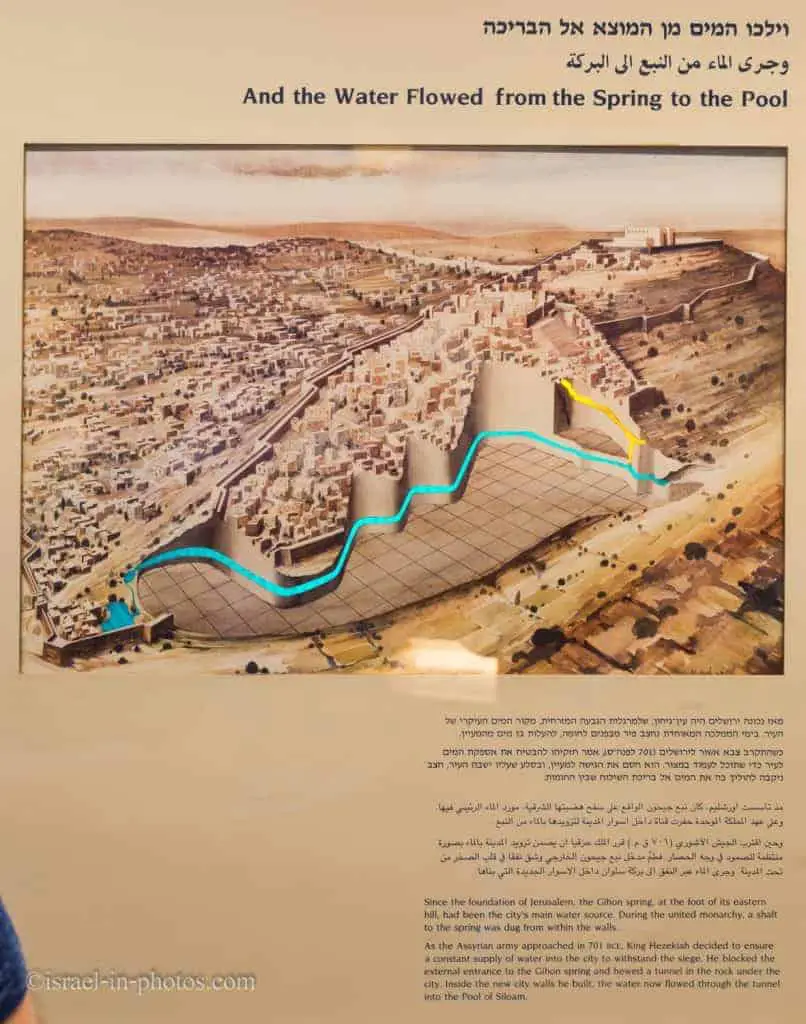
You can find additional information and walk Hezekiah’s Tunnel in the City Of David.
The Babylonians, under Nebuchadnezzar, captured the city in 586 BCE. They destroyed Jerusalem, burnt the Temple, and exiled most population to Babylon.

Return to Zion and Second Temple Period (515 BCE)
Return to Zion and the Second Temple Period (marked as #6 on the Tower Of David map) begins with the declaration of Cyrus.

In 538 BCE, the Babylonian kingdom fell in the hands of the Persians. Unlike the Babylonian kings’ custom of exiling the nations they had conquered and destroyed their temples, King Cyrus adopted an opposite policy: in his famed proclamation, Cyrus allowed exiles to return to their countries and rebuild their temples.
The Second Temple
They returned and rebuilt the Temple.
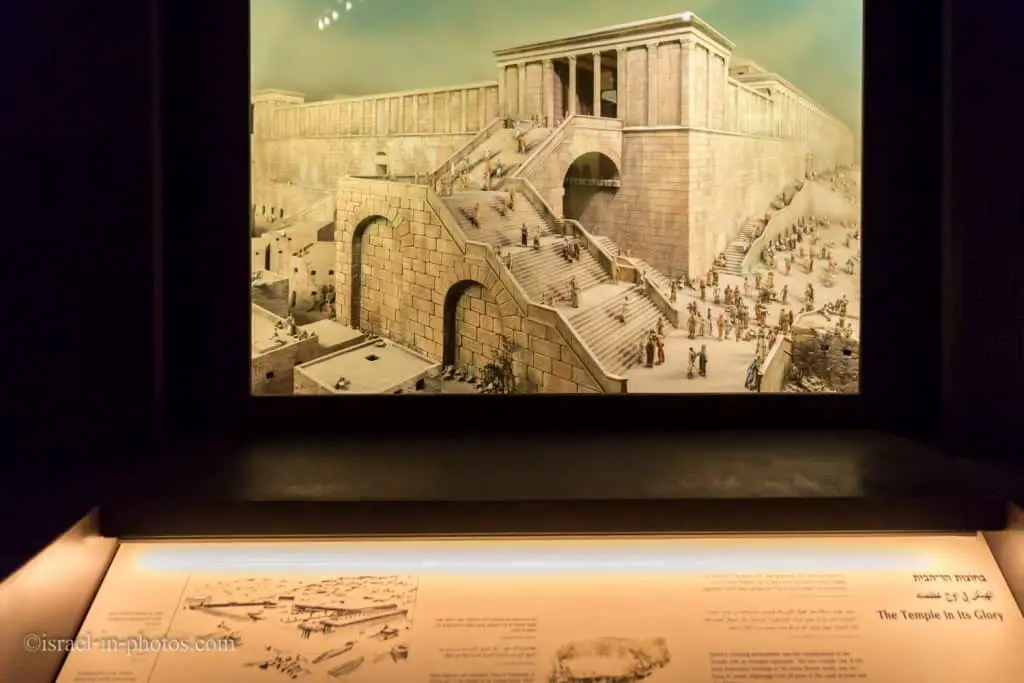
Herod glorified Jerusalem and built enormous Greco-Roman buildings, among which three towers are famed, Hippicus, Phasael, and Miriamne. They protected the entrance to the city and particularly the King’s Palace.
The crowning achievement of Herod’s building project was expanding the Temple Mount esplanade and turning the Temple into a glorious site. The Temple became an object of desire for hundreds of thousands of pilgrims from within the country as well as abroad.

The Fall of Jerusalem
After King Herod’s death (4 BCE), the country became a Roman province. Hostility between the Jews and Romans grew under the rule of the procurators and eventually led to the Great Jewish Revolt. Titus, son of Emperor Vespasian, laid siege on Jerusalem (70 CE). Battles for the city raged for five months before it fell in the hands of the Romans. The Temple was set on fire and Jerusalem lay in ruins.

We headed outside to the point of interest #7. There was a model of Jerusalem in the Second Temple period.


Note: you can find additional information about Hulda Gate at Davidson Center.
We also saw a model of Byzantine Jerusalem and then headed to the next period.
Early Muslim Period (638)
Note: at hall #10 (from the Tower Of David map), you can find the Early Muslim Period (638), Crusader Period (1099), and Ayyubid Period (1187).

The exhibit recounts over 400 years of Muslim domination in Jerusalem, beginning in 638 CE when the city surrendered without a battle to the Muslim conquerors and became the third most important religious center for Islam.

Prophet Mohammed’s Night Journey
The sanctity of Jerusalem in Islam is based on an Islamic tradition originating in the 17th Sura of the Koran. According to the tradition, the Prophet Mohammed was carried on the back of his winged horse (al-Buraq) from Mecca to Jerusalem and from the rock on Temple Mount, the Prophet ascended to the highest of heavens.
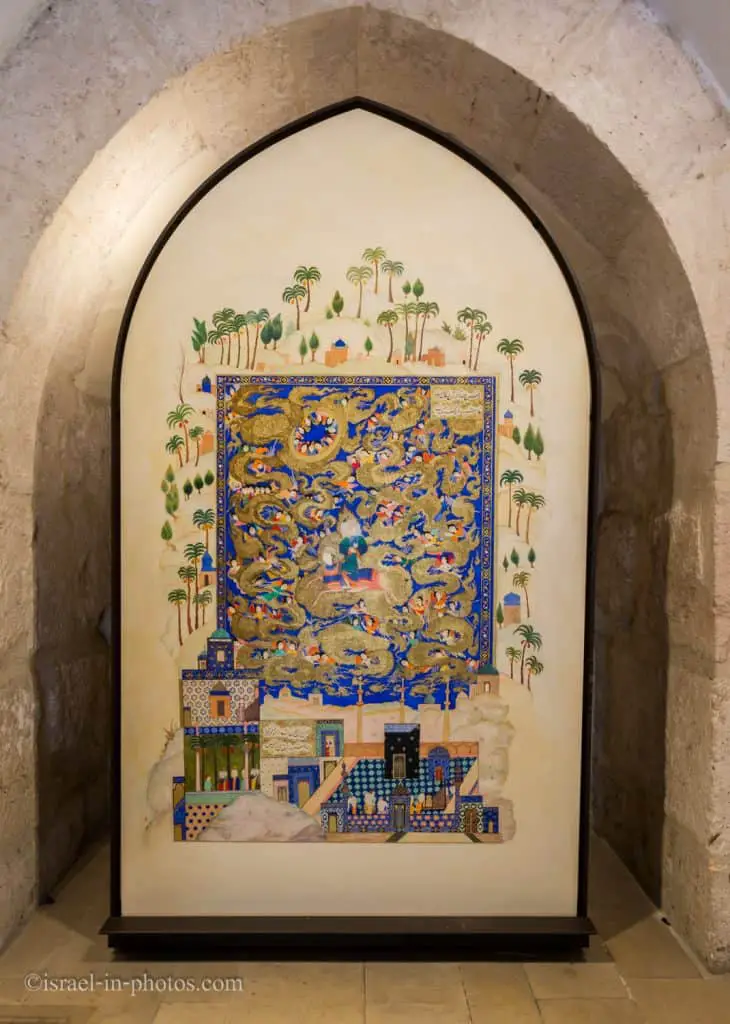
Dome of the Rock

In 691 CE, Caliph Abd al-Malik built the Dome of the Rock (Qubbat as-Sakhrah) as a dwelling for the sacred rock. The splendid structure was built on Mount Moriah and sought to overshadow the Church of the Holy Sepulcher. It has since become a symbol of Islam. The walls of the Dome of the Rock were covered in rich glass mosaics both inside and out. Ceramic tiles later replaced the outer mosaics.

Crusader Period (1099)
The Crusader armies reached Jerusalem in 1099, following an appeal from Pope Urban II to liberate Christian shrines from the Moslems. The city, then ruled by the Fatimids of Egypt, was conquered in a brief but bitter siege, after which the Moslems and Jews were slaughtered.
Jerusalem became the capital of the Latin Kingdom of Jerusalem, a capital city for the first time since the end of Jewish sovereignty. It was inhabited by European and Eastern Christians. Mosques were turned into churches and buildings sprang up to accommodate devout pilgrims from around the world.

Knightly Orders
Four knightly orders were based in Crusader Jerusalem – the Knights Templar, the Knights Hospitaller, the Teutonic Order and the Order of St. Lazarus. The knightly orders combined two ideals: chivalry and monasticism. The exhibit includes four statues of knights, each representing one of the four orders with its unique characteristics.

Note: one of the most impressive remains of the orders is the Hospitaller Fortress in Akko.
In 1187, the Crusaders lost Jerusalem to Saladin, the ruler of Egypt and Syria and the founder of the Ayyubid dynasty.

Mamluk Period (1260)
Our next stop is the Mamluk Period hall (marked as #12 on the Tower Of David map).

The exhibition describes Mamluk rule in Jerusalem from 1260 until the city’s conquest by the Ottomans in 1517. The Mamluks, originally slaves who came from the Asian plains, emphasized Jerusalem’s religious status and made the city a center of Islamic study containing madrassas (religious colleges), mosques, and splendid religious structures. The exhibit highlights the city’s religious significance and the shared life of the various communities in the city as well as the Mamluk attitude towards non-Muslim minorities.
Ottoman Period (1517)

On the 400 years of Ottoman rule in Jerusalem (1517 – 1917), in which the city saw days of glory and decline. With the exception of the rule of Sultan Suleiman the Magnificent, when the city’s walls and most of its gates were built, Jerusalem was a remote village on the outskirts of the Ottoman Empire. The period culminated with the great upheaval that overtook the city in the 19th century: the penetration of European powers and the transition into the modern age.

Jerusalem’s water system was restored during the rule of Sultan Suleiman the Magnificent. Eight fountains (sabils) were built throughout the city providing water to its residents and to visitors for generations.
British rule – State of Israel (1917)
The exhibition covering key events that took place during the 30 years of British Mandate in Palestine, leading up to the establishment of the State of Israel and Jerusalem as its capital in 1948.

We did not visit this hall since it is closed for renovations. Hence we continued to the next point of interest.
Original 19th-century model of Jerusalem
The 1873 Stefan Illes model is located near the exit (marked as #14 on the Tower Of David map).

Stefan Illes was a Hungarian bookbinder. He arrived in Jerusalem in 1864, and after working for the Franciscan press, he started researching the history of this city.
Illes’ primary work was building a precise model of Jerusalem at a scale of 1:500.
At this point, almost two hours since the beginning, Jerusalem through the Ages tour ended. We enjoyed it a lot and learned many new things. And we highly recommend joining one of them.
Temporary Exhibitions
After the tour, we returned to the Crusader Hall (marked as #15 on the Tower Of David map).

The Crusader Hall held “The Mount” exhibition. But I will tell you about it in the guide to the Dome of the Rock.

How Much Time Does a Visit to the Tower Of David Take?
Our latest visit took around three hours (the two-hour tour, a small break, and the temporary exhibition).
The audio guide tour lasts 1 – 1.5 hours. And according to Google: “People typically spend up to 3 hours here”. Thus, a typical visit to the museum will take 1.5 – 3 hours.
Night Experiences – Light Show
Currently, there are two different night experiences. They are the Night Spectacular and King David.
Note: the official name is Night Experiences, but many call it the Light Show.
The night shows at the Tower of David envelop you in a multi-sensory experience that combines the past and the present using the most advanced technologies in the world. Powerful laser projectors accompanied by high-quality sound combine to create a magical moment.
The walls of the Citadel serve as a backdrop for the night performances and present a celebration of sights and sounds. Screened among the archeological remains in the Citadel courtyard and to the sounds of original music, the story of the city of Jerusalem – in the Night Spectacular, and the story of KING DAVID in the King David show, come to life with breathtaking giant images.
The night performances use the art technique of Trompe-l’ œil to create an illusion whereby the giant stones and structures of the Citadel transform into images that surround the viewer in a singular sensory experience. Innovative techniques and a sophisticated computer system that operates 20 projectors, ten video players, 14 computers, and 14 speakers are joined by 10 kilometers of cable and two screening rooms.
The Night Spectacular and the KING DAVID show are for everyone – Israelis and tourists, families, speakers of all languages – and all lovers of Jerusalem!
Recently we visited Night Spectacular, and now I will tell you about our experience.
Preparations
I bought tickets on the official website for the Night Spectacular at the Tower of David. On most evenings (during weekdays), there were two shows at the moment of the purchase, the first at 20:30 and the second at 21:30. We bought tickets for the first Night Spectacular on Thursday.
Beyond purchasing tickets in advance, you will have at least several hours between the museum closure and the light show if you buy a combo ticket. Thus, you will have to decide what to do during this time. And you will probably be hungry. Therefore, visiting Mahane Yehuda Market or the Downtown Triangle area can be a good option.

Note: the Downtown Triangle is Jerusalem’s central commercial and entertainment district. The area is bounded by Jaffa Road on the north, King George Street, and Ben Yehuda Street. You can find many restaurants and food places in this area.
At the Night Spectacular

As I mentioned, we had the 20:30 tickets for the Night Spectacular at the Tower of David. On the ticket, a remark told us we should be on 20:10 by the entrance. As you can see, at 20:10, we were among the only ones there.

But at 20:35, just before they opened the gate, you could barely find a free spot.

Our ticket was for 20:30, and the next show was at 21:30, so we could be there for 50 minutes. As they told us, we had 20 minutes to walk through the Tower of David and another 25 minutes for the show. But since they opened after 20:30 and the line took 10-15 min, many people walked straight to the Night Spectacular sitting places.

We walked through the Tower of David. But there was not much to see. Besides the general lighting, we saw several places with light animations, and several corners were lighted. And that is it. It was pretty disappointing.


Here is a photo of one of the animations where two people are playing chess.

The Movie
The walkthrough Tower of David took us about ten minutes, and we took our places.
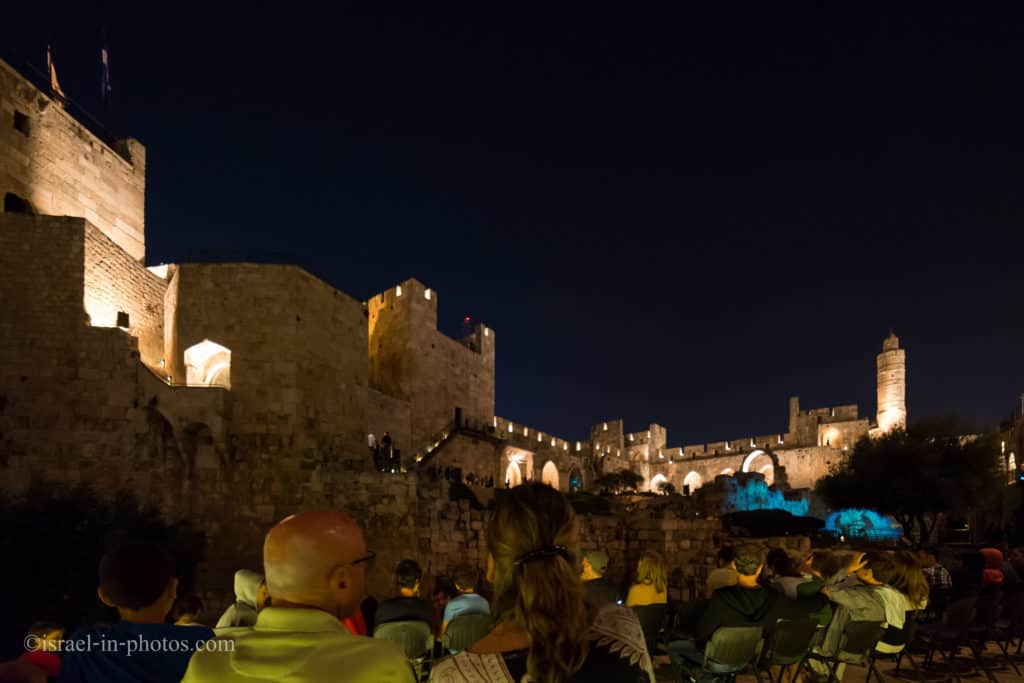
We were asked not to photograph and record video during the light show. Thus I do not have anything of mine from the light show. But I can say that we enjoyed it. It was a twenty-minute movie projected on the inner walls. The film briefly tells the story of Jerusalem, starting from The Book of Genesis and the world’s creation. Then you could see the construction of Jerusalem, the Babylonian Exile, until modern days.
The animation does not have any narration. Thus the better you know history, the more you will understand. Therefore, it is better to visit the museum before the night show.
Tip: consider bringing something warm to the show, as it might be chilly in the evening.
Here is the official video:
I took this photo after the show so that you could see on which walls the central part of the show is projected:

Regarding seating places, I do not think there are any best or worst ones except maybe the seats too close to the walls.
As the Night Spectacular ended, the staff rushed us to exit since the next group was about to enter.
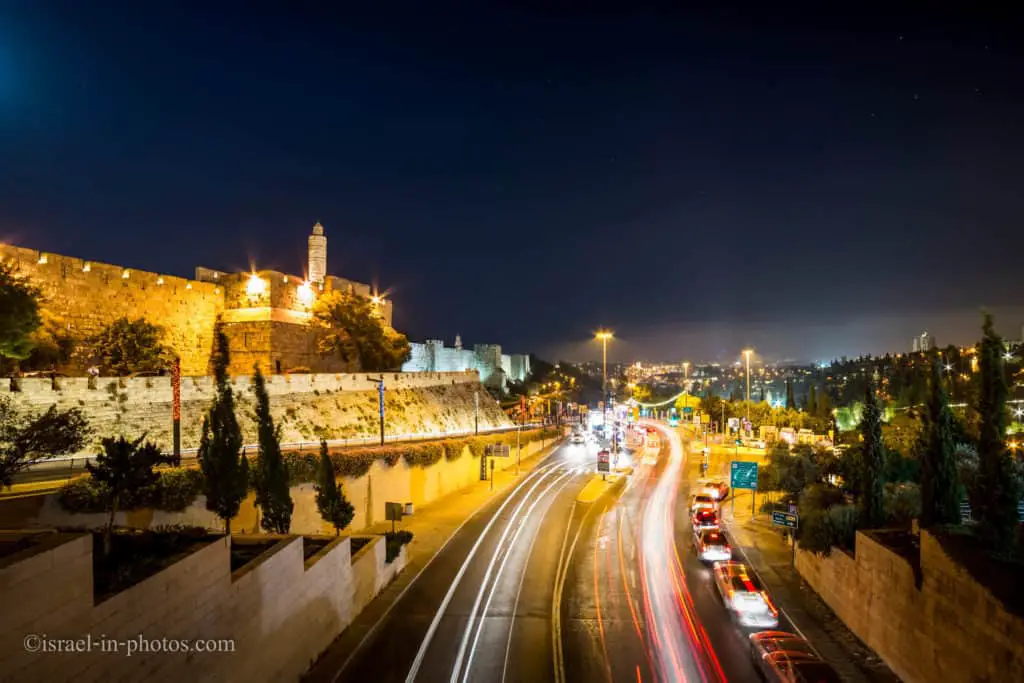
Summary
Tower Of David is a history museum, specifically about the history of Jerusalem. If you love history and archeology, I recommend visiting this museum. Furthermore, I would strongly advise joining the overview tour (it is included in the entrance fee).
Moreover, Night Experiences at the Tower of David is a lovely addition, and if you have not been to either, consider purchasing the combo tickets. But to better understand the movie, visit the museum first.
Have you been to the Tower Of David? Tell us about your experience in the comments below.
That’s all for today, and I’ll see you in future travels!
Stay Tuned!
For additional points of interest nearby, check out Jerusalem.
Additional Resources
Here are several resources that I created to help travelers:- Trip Planner with Attractions and Itineraries is the page that will help you create your perfect travel route.
- What is the Best Time to visit Israel? To answer this question, we will consider the weather, prices, holidays, festivals, and more.
- Information and Tips for Tourists to Israel will answer the most common questions tourists have about Israel (including safety, passports, weather, currency, tipping, electricity, and much more).
- Israel National Parks and Nature Reserves include a complete list, top ten, map, tickets (Israel Pass, Matmon, combo), and campsites.
- If you are looking for things to do, here are the pages for Jerusalem, Tel Aviv, Haifa, Sea Of Galilee, Akko (Acre), Eilat, Nazareth, Safed (Tzfat), and Makhtesh Ramon.


